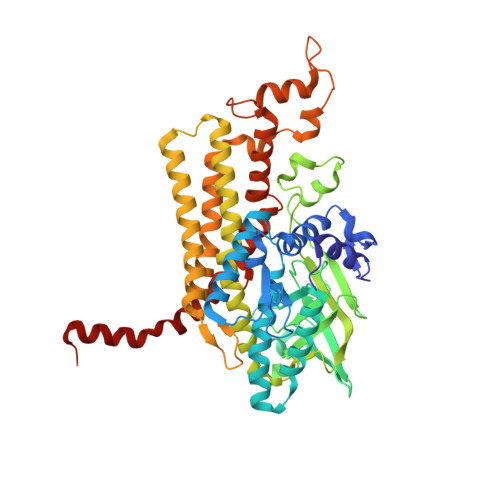Crystal structure of 4-hydroxybutyryl-CoA dehydratase: radical catalysis involving a [4Fe-4S] cluster and flavin.
Martins, B.M., Dobbek, H., Cinkaya, I., Buckel, W., Messerschmidt, A.(2004) Proc Natl Acad Sci U S A 101: 15645-15649
- PubMed: 15496473
- DOI: https://doi.org/10.1073/pnas.0403952101
- Primary Citation of Related Structures:
1U8V - PubMed Abstract:
Dehydratases catalyze the breakage of a carbon-oxygen bond leading to unsaturated products via the elimination of water. The 1.6-A resolution crystal structure of 4-hydroxybutyryl-CoA dehydratase from the gamma-aminobutyrate-fermenting Clostridium aminobutyricum represents a new class of dehydratases with an unprecedented active site architecture. A [4Fe-4S](2+) cluster, coordinated by three cysteine and one histidine residues, is located 7 A from the Re-side of a flavin adenine dinucleotide (FAD) moiety. The structure provides insight into the function of these ubiquitous prosthetic groups in the chemically nonfacile, radical-mediated dehydration of 4-hydroxybutyryl-CoA. The substrate can be bound between the [4Fe-4S](2+) cluster and the FAD with both cofactors contributing to its radical activation and catalytic conversion. Our results raise interesting questions regarding the mechanism of acyl-CoA dehydrogenases, which are involved in fatty acid oxidation, and address the divergent evolution of the ancestral common gene.
Organizational Affiliation:
Max-Planck-Institut Biochemie, Strukturforschung, 82152 Martinsried, Germany. martins@biochem.mpg.de




















